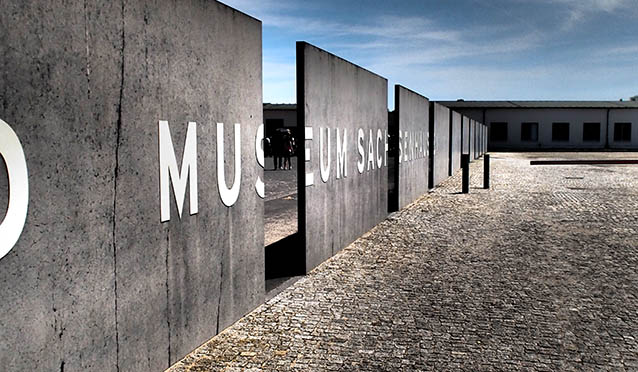
It’s easy to read about history, the horrors of the past are easily disguised between the pages of a history book. A simple sentence could equate to the sum of a long and interesting life or the collective misery of thousands, and be dismissed by us the reader, as easily as kipping ahead a paragraph to save time or just because we are distracted. – Yet the lives of the people we read about did happen, and to visit an actual site of an atrocity makes for a surreal and confronting experience, yet one that is also both memorable and important.
Visiting a mass grave like those present at Sachsenhausen for example, remove any hint of doubt from our minds that what we are reading is a fictional story and puts the reality of the situation into a very non-fiction context, given you’re literally standing on top of human remains while listening to a survivor recount his personal tragedy as if it were yesterday…
You can’t travel to modern Germany without acknowledging the past (and recent past at that), less than a few generations ago the extermination camps were in full swing orchestrating Hitler’s’ ‘final solution’ and the Nazi war machine was grinding its way across Europe.
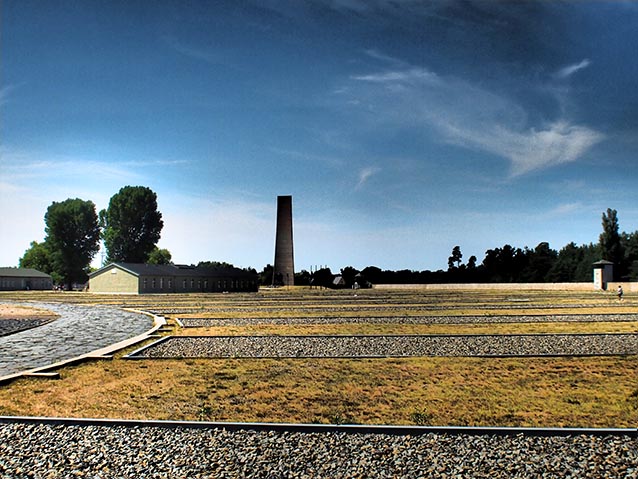
Sachsenhausen Concentration Camp (now Sachsenhausen Memorial and Museum) operated in some capacity from 1933 – 1950. While not as notorious as the infamous Auschwitz, Sachsenhausen committed atrocities in just the same manner (albeit on a lesser scale). Estimates put the number of deaths at Sachsenhausen at roughly 100,000 people, largely Soviet POW’s and those unfortunate enough to be deemed racially or biologically ‘inferior’ by the Nazi’s.
Originally named the Oranienburg Concentration Camp in 1933, the site was created in order to imprison political ‘enemies’ of the National Socialist Party in their rise to power before being commandeered by the Nazi SS in 1934. The site was reconstructed into a ‘model’ concentration camp and housed over 300,000 people in its time. After the war ended in 1945 the site was used by the NKVD (Soviet Special Service) and imprisoned a further 60,000 people, mainly Nazi ‘sympathisers’ and soviet ‘political undesirables’, many of which were also to perish.
One of the really scary things about the camp was its location, right on the S-Bahn train line, easily accessible via the public rail system which used to actually help transport prisoners to the facility via Berlin. Today it’s just as easy to get to get to the camp from Berlin, simply take the S1 to the end of the line which terminates at Oranienburg, it’s then about a 15 minute walk from the station.
Once at the site, the 3 Euro audio-guide is an absolute must; I found it to be one of the best audio-guides I’ve ever used, with literally hours of fantastic (and horrifying) information. The guides programmed audio information is contextually based on each ‘station’ (easily marked) allowing visitors to go through the camp in numeric order or by just wandering the grounds in no particular order just keying in each area as they go.
Upon entering the camp area, it’s hard not to feel the utter hopelessness each prisoner must have experienced just looking around at the layout of the camp. Designed to be a ‘model’ concentration camp, there is almost nowhere within the facility not in direct line-of-site to one of the many watchtower mounted machine guns that dotted the walls. That’s also before you even notice the rolls of electrically charged barbed wire, razor fences and the 12 foot high wall that isolated the prisoners from the rest of the world.
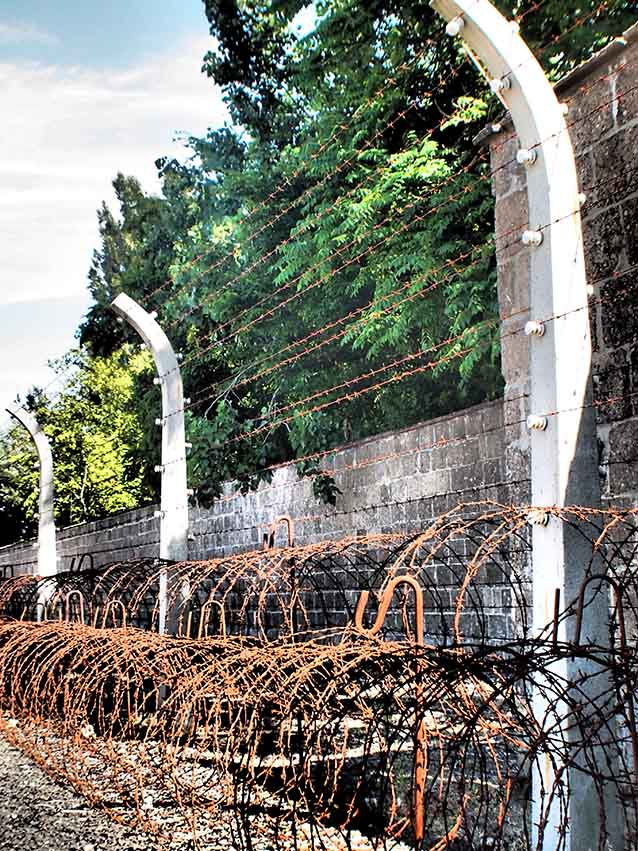
There are still 2 barrack buildings left standing which were originally used to house many of the Jewish prisoners (also sadly, the focus of a Neo-Nazi fire bomb attack in 1992). A moment or two inside really puts into perspective the awful living conditions prisoners had to endure day to day with far too few bunks, toilets and even oxygen.. (rooms were deliberately air sealed at night) resulting in extreme prisoner discomfort and regular deaths overnight.
You can venture into virtually all areas of what was the concentration camp, from the watchtowers to the barracks and the infirmary. The most memorable and truly horrific part for me however was the area known as ‘Station Z’, the execution site that housed a purpose built trench created for the firing squads as well as a ‘death machine’ designed to cruelly and efficiently execute prisoners. Yet, just as confronting are the adjacent crematoriums which were used to dispose of the many thousands of prisoners bodies created each day. Once consumed, the bodies (now ashes) were buried in deep pits, today marked grave sites built in memory of the thousands of people whose remains are still in the ground beside the sites of their deaths.
I’m sure we’ve all been disturbed at some point in our lives by the details of WWII we’ve gleaned from photos, books, TV and Film, yet seeing the physical site of an atrocity put those images and that information into an uncomfortably real context.. to be there, standing on the very site where tens of thousands of innocent people where deliberately murdered is both confronting and disturbing.
Indeed one of the darkest parts of the experience was hearing firsthand about the inhuman attitudes of the oppressors, their inclination towards torture, brutality and their callous disregard for human suffering.
Visiting and exploring a concentration camp in person puts into perspective the full scale of the capabilities people seem to have for doing unimaginable evil. All-together a confronting and thought provoking experience, while dark and often unpleasant the experience in my opinion is a very important one for visitors to Berlin, especially for those with even a vague interest in history, politics or the humanities.
Sachsenhausen is a great example of a low point in human history yet it also stands as a constant reminder that while we have made horrible mistakes in the past, going forward we always have the ability to learn from history and consciously avoid them.

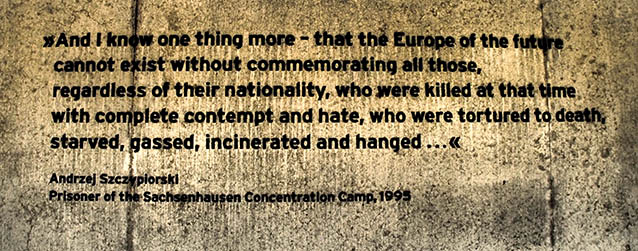
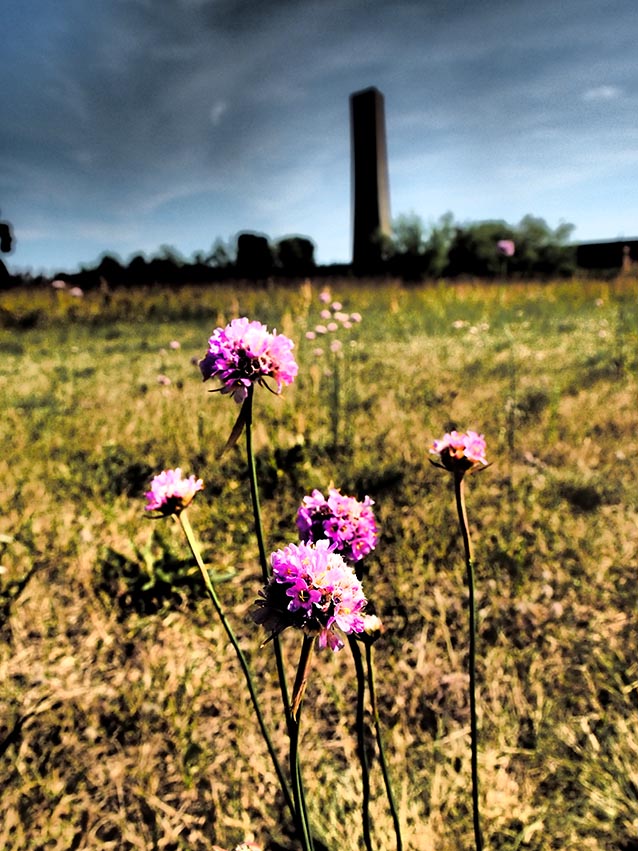
A visit to a concentration camps feels horrible. I don’t know, there is a negativity in the air, a silence and a sad feeling that is difficult to dismiss. However, I think you should visit one if you can. It helps us to not forget about certain things and be grateful for what we have.
Yeh agreed, they just have this dark vibe don’t they.. yet I think they are an important lesson to us all.
Sounds traumatic but interesting.